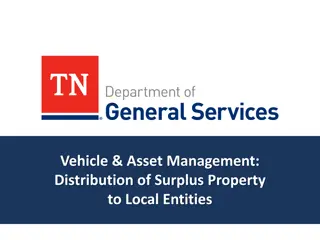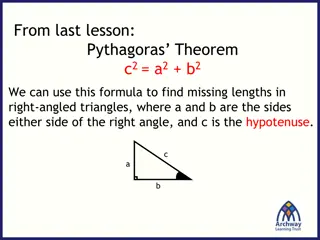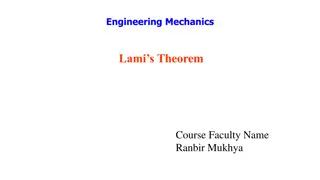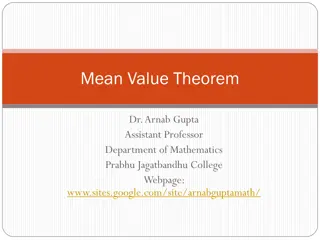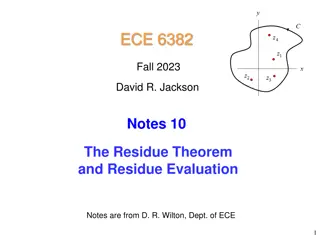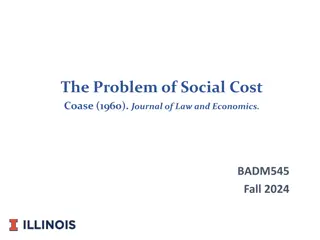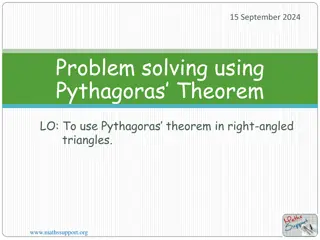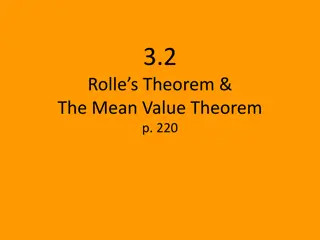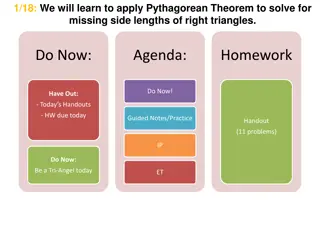Understanding the Coase Theorem: Property Rights and Economic Efficiency
The Coase Theorem, developed by economist Ronald Coase, posits that under certain conditions, bargaining related to property rights will lead to an optimal outcome regardless of the initial distribution. It provides a framework for resolving conflicts by emphasizing negotiation and efficient market conditions. The theorem is applied in situations where one party's actions impact another's property, allowing for compensation or changes in behavior through bargaining. An example involving a noisy factory and neighboring households illustrates the theorem's application in resolving disputes.
Download Presentation

Please find below an Image/Link to download the presentation.
The content on the website is provided AS IS for your information and personal use only. It may not be sold, licensed, or shared on other websites without obtaining consent from the author. Download presentation by click this link. If you encounter any issues during the download, it is possible that the publisher has removed the file from their server.
E N D
Presentation Transcript
COASE THEOREM PREPARED BY ANINDITA CHAKRAVARTY
What Is the Coase Theorem? The Coase Theorem is a legal and economic theory developed by economist Ronald Coase regarding property rights. It basically asserts that bargaining between individuals or groups related to property rights will lead to an optimal and efficient outcome, no matter what that outcome is. The Coase Theorem argues that under the right conditions parties to a dispute over property rights will be able to negotiate an economically optimal solution, regardless of the initial distribution of the property rights.
The Coase Theorem offers a potentially useful way to think about how to best resolve conflicts between competing businesses or other economic uses of limited resources. In order for the Coase Theorem to apply fully, the conditions of efficient, competitive markets, and most importantly zero transaction costs, must occur.
Example of the Coase Theorem The Coase Theorem is applied to situations where the economic activities of one party impose a cost on or damage to the property of another party. Based on the bargaining that occurs during the process, funds may either be offered to compensate one party for the other's activities or to pay the party whose activity inflicts the damages in order to stop that activity.
The Coase Theorem is applied to situations where the economic activities of one party impose a cost on or damage to the property of another party. Based on the bargaining that occurs during the process, funds may either be offered to compensate one party for the other's activities or to pay the party whose activity inflicts the damages in order to stop that activity.
For example: if a business that produces machines in a factory is subject to a noise complaint initiated by neighboring households who can hear the loud noises of machines being made, the Coase Theorem would lead to two possible settlements. 1. The business may choose to offer financial compensation to the affected parties in order to be allowed to continue producing the noise or 2. The business might refrain from producing the noise if the neighbors can be induced to pay the business to do so, in order to compensate the business for additional costs or lost revenue associated with stopping the noise. The latter would not actually occur, so the result would be the business continuing operations with no exchange of money.
If the market value produced by the activity that is making the noise exceeds the market value of the damage that the noise causes to the neighbors, then the efficient market outcome to the dispute is that the business will continue making machines. The business can continue to produce the noise and compensate the neighbors out of the revenue generated.
If the value of the business's output of making machines is less than the cost imposed on the neighbors by the noise, then the efficient outcome is that the business will stop making machines and the neighbors would compensate the business for doing so. In the real world, however, neighbors would not pay a business to stop making machines because the cost of doing so is higher than the value they place on the absence of the noise.
Can the Coase Theorem Be Applied in the Real World? In order for Coase Theorem to apply, conditions for efficient competitive markets around the disputed property must occur. If not, an efficient solution is unlikely to be reached. These assumptions: zero transaction (bargaining) costs, perfect information, no market power differences, and efficient markets for all related goods and production factors, are obviously a high hurdle to pass in the real world where transaction costs are ubiquitous, information is never perfect, market power is the norm, and most markets for final goods and production factors do not meet the requirements for perfect competitive efficiency.





